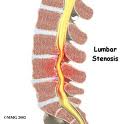If you are above 50 years old, do you have back pain that was worsened by walking? Is the back pain eased by crouching or rolling into a fetal position? You may have lumbar or lower back spinal stenosis.
Stenosis means narrowing. In this case, it is the narrowing of the spine. The lower back has relatively large blocks of bone called vertebrae that are stacked on top of each other. There are spaces on the sides of the bones where nerves that supply the lower extremity exit.
Normally, there’s just enough space for these sensitive nerve roots to slide through. If for some reason the space is compromised, the nerves are choked and this result is manifested as: Pain, numbness, weakness or cramping.
Pressure or nerves can occur from trauma (bad spills and car accidents), tumors of the spine that eat bone, and if seen in children, it is from congenital deformities of the spine.
However, the most common culprit is arthritis of the spine. This is the reason older people are more frequent sufferers. Degenerative arthritis attacks not only the large joint like the hips and knees but the miniature ones of the spine as well.
When arthritis occurs, extra bone grows obstructing the path of nerves. Ligaments and coverings also thicken, adding to the pressure.
The doctors to visit are: family medicine practitioners, rehabilitative medicine specialists (physiatrists), rheumatologists, neurologists, neurosurgeons and orthopedic surgeons. These doctors are trained to handle spinal stenosis cases from their own vantage points.
A thorough physical examination includes recreating the movements that aggravate lower back symptoms. Longstanding conditions may manifest a loss of muscle tone, strength and a decrease in muscle reflexes.
An x-ray will reveal injury, tumor or arthritis, more sensitive imaging such as CT scans or MRI are requested if pressure signs and symptoms are progressive chafed nerves and sheaths react by swelling.
Non-steroidal anti-inflammatory drugs are taken for both pain and swelling. COX-2 inhibitors are now being used for both acute and chronic pain control.
Physical therapy and prescribed exercises may help stabilize the spine and restore good picture. Steroid injections with pinpoint accuracy help reduce inflammation of nerve coverings. Older patients may benefit from corsets and braces.
The purpose of surgery is to recreate the space where the compressed nerves once occupied freely.
